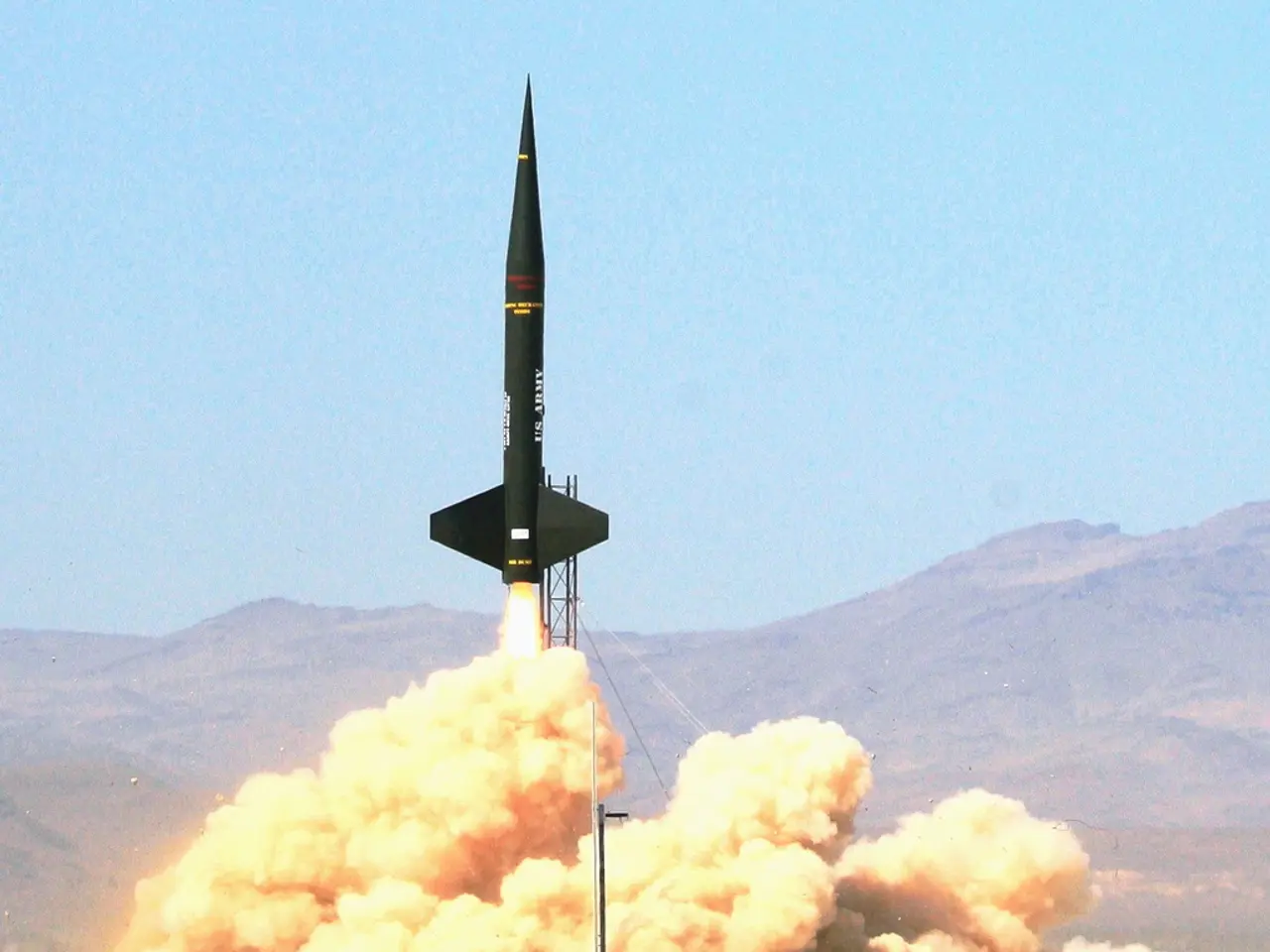Weather satellite GOES-U successfully lifted into orbit via Falcon Heavy rocket launch
SpaceX's Falcon Heavy Rocket Launches NOAA's GOES-U Satellite
In a groundbreaking event, SpaceX successfully launched the Geostationary Operational Environmental Satellite-U (GOES-U) on Tuesday from Florida. Known as GOES-19 after its launch, this satellite is the fourth and final satellite in NOAA's GOES-R series.
The launch was conducted using a SpaceX Falcon Heavy rocket, a triple core configuration that offers an initial thrust of more than 2,200 tonnes, equivalent to about eighteen Boeing 747s taking off. The rocket's robust design allows it to carry massive payloads into geostationary orbit, making the launch of satellites like GOES-U possible.
The lateral boosters of the Falcon Heavy returned to land successfully at Cape Canaveral, marking another successful landing for SpaceX.
GOES-U plays a crucial role in meteorological and environmental monitoring by providing advanced Earth imagery and atmospheric measurements. It significantly enhances weather forecasting through its improved spatial and temporal resolution, allowing for high-resolution imaging with updates as frequent as every 30 seconds. This capability is essential for monitoring rapidly evolving phenomena like tropical cyclones and severe thunderstorms, supporting timely warnings and response efforts.
Beyond weather observation, GOES-U also monitors space weather. It is equipped with instruments such as the Goddard Magnetometer and the Space Environment In Situ Suite to observe solar activity and space weather hazards that can disrupt power grids, communications, and navigation systems. These combined functions support critical forecasting for both Earth’s environment and near-Earth space conditions.
Moreover, the satellite’s data contributes to ongoing improvements in environmental and climate-related monitoring. GOES-U is part of the GOES-R series that marks a major technological advance, and it will operate until the early 2030s, at which point it will be succeeded by the GeoXO program designed to address emerging environmental challenges with even more advanced instruments for air quality, ocean monitoring, and climate observations.
GOES-U's launch reinforces the trust between NASA and NOAA and SpaceX. The GOES-R Series program, which includes GOES-U, is overseen by NOAA through an integrated NOAA-NASA office. Lockheed Martin designed, built, and tested the satellites in this series, while L3Harris Technologies is providing the primary payloads.
The data collected by GOES-U is essential for preparing for severe storms, detecting wildfires, and building resilience to climate change. It will provide continuous coverage of weather and environmental conditions across the Western Hemisphere, including North America, Central America, South America, the Caribbean, and the Atlantic Ocean to west coast Africa. GOES-U will operate at approximately 36,000 km above Earth.
GOES-U is also equipped with a new instrument, the Compact Coronagraph-1, designed to block out the Sun's bright light and allow scientists to observe the Sun's fainter atmosphere. This will contribute to ongoing solar research and understanding.
In summary, GOES-U is significant because it:
- Provides near real-time, high-resolution imaging critical for weather and severe storm tracking.
- Enables continuous lightning detection, improving storm intensity forecasts.
- Monitors solar and space weather to anticipate disruptions to technological infrastructure.
- Advances environmental and climate monitoring capabilities for the Western Hemisphere.
- Bridges to the next generation of geostationary satellites (GeoXO) for expanded Earth observation.
The launch of GOES-U marks a new era in meteorological and environmental monitoring, contributing to the protection of Western populations.
- The launch of the GOES-U satellite, which is part of NOAA's GOES-R series, is significant as it plays a crucial role in meteorological and environmental monitoring, providing advanced Earth imagery and atmospheric measurements.
- GOES-U's high-resolution imaging capabilities are essential for tracking weather and severe storms, enabling continuous lightning detection and improving storm intensity forecasts.
- In addition to weather observation, GOES-U monitors space weather, observing solar activity and space weather hazards that can disrupt power grids, communications, and navigation systems.
- The data collected by GOES-U contributes to ongoing improvements in environmental and climate-related monitoring, bridging to the next generation of geostationary satellites (GeoXO) for expanded Earth observation, thus supporting research in solar science and addressing emerging environmental challenges.




